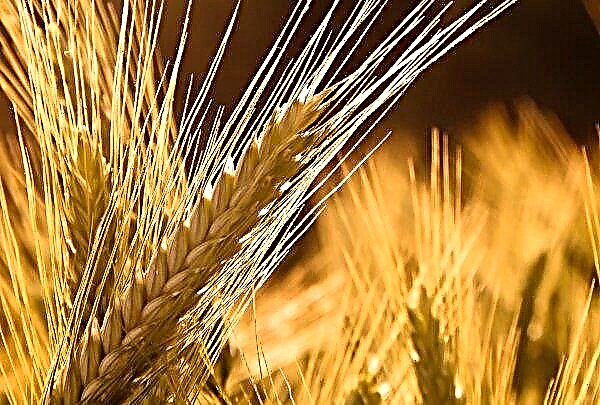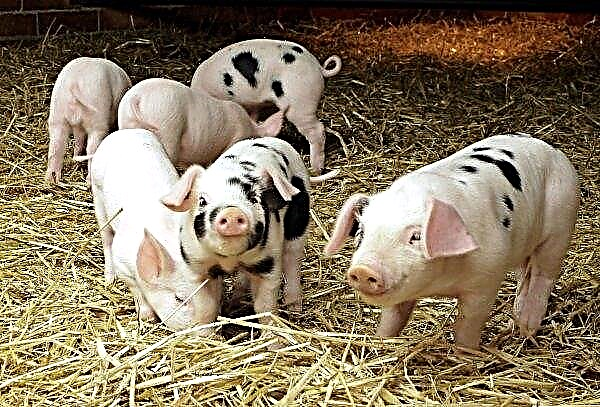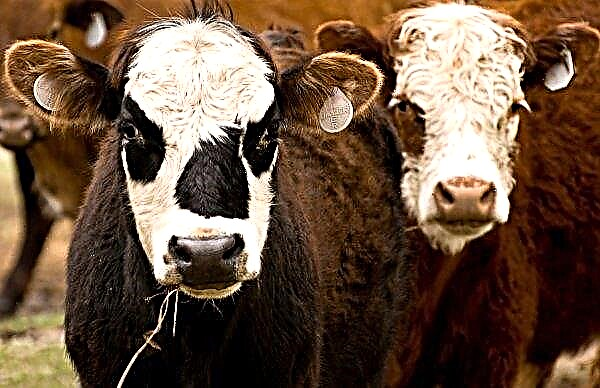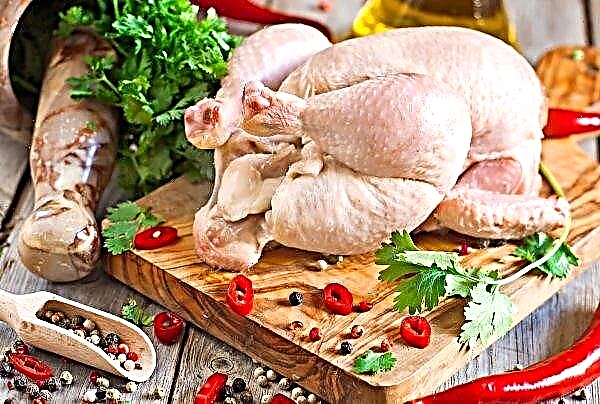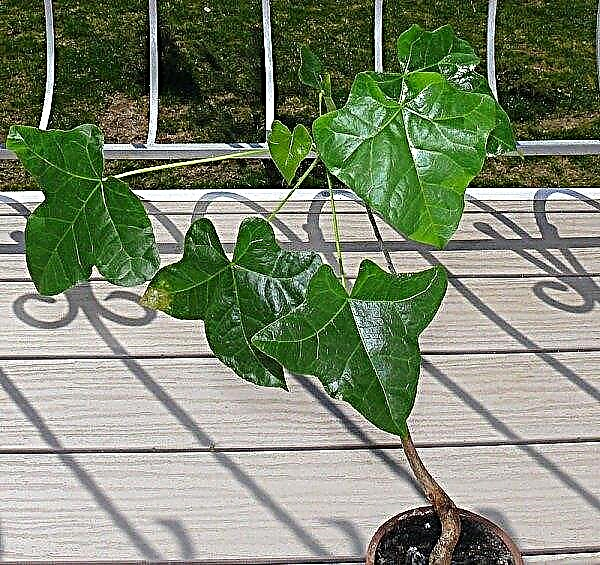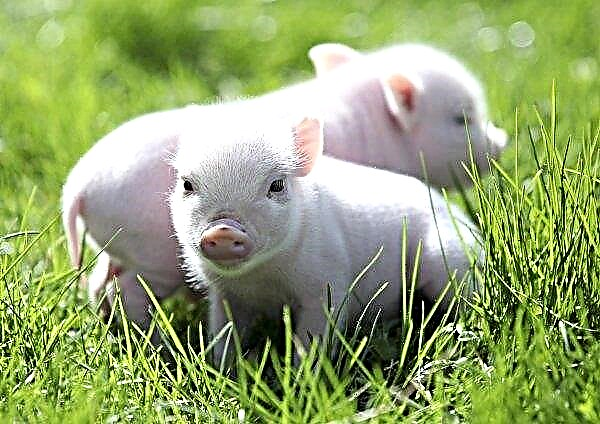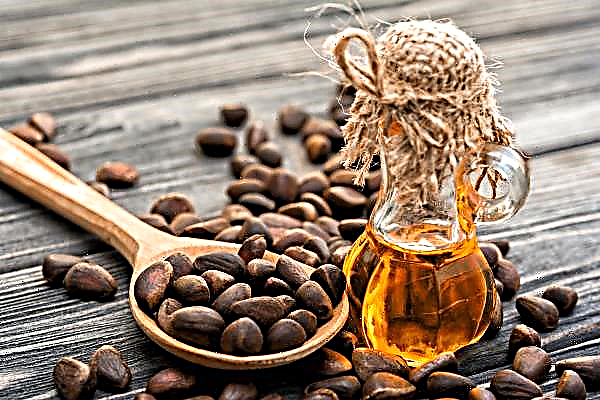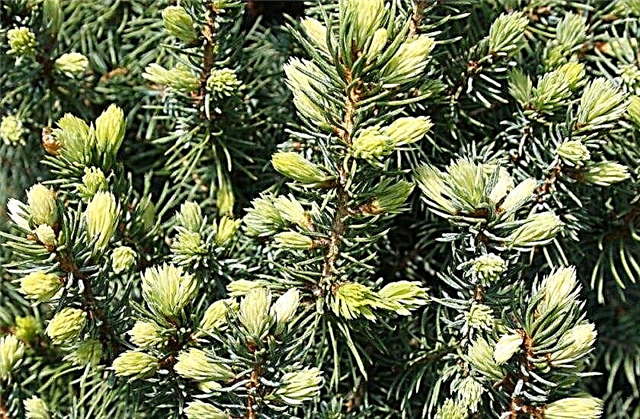Domestic gardeners sort of sweet pepper Kolobok known for about 40 years. Many appreciate its characteristics and taste. Today's article is devoted to the description of this variety and the secrets of its cultivation.
Grade description
Pepper Kolobok received this name due to the spherical shape of the fruit. The fruits of the variety can be not only red, but also yellow. Moreover, in technical indicators there are no differences between them.
Variety characteristics:
- The bush is not tall, up to 40 cm, with strong stems, strewn with bright green foliage.
- Leaf plates are large, triangular in shape, in extreme heat, cover the fruits from sunburn.
- Ripening early - after 108 days comes technical ripeness. The fruit is painted in light green color.
- Biological maturity is achieved within 140-145 days. Peppers acquire a bright red color.
- The shape of the fetus is round, with a smooth dense skin, weight - 90-140 g.
- The walls of the pulp are thick, up to 9 mm, the pulp is fleshy, juicy, sweet.
- The content of ascorbic acid in 100 g is 200% of the recommended daily intake.
- From 1 m², up to 6 kg of crop is harvested.
- The variety is resistant to verticillium wilt, mosaic and apical rot, but is susceptible to fusarium and anthracnose.
- It is grown in seedling method. You can plant in the greenhouse, and in open beds.
- In cooking, it is used in fresh and processed form, ideal for winter preservation.
Did you know? Dark chocolate and sweet pepper are related by one property: they provoke the release of hormones of happiness into the blood.
Advantages and disadvantages
The grade of pepper Kolobok, according to reviews of summer residents, has practically no drawbacks, but it has a lot of advantages.
- Pros:
- high taste;
- fast ripening;
- fleshy fruit, almost without voids;
- fruit keeping quality;
- good yield;
- resistant to viral diseases;
- does not require formation and garter.
- Minuses:
- the root system is close to the surface;
- prone to fungal diseases.
Growing seedlings at home
Gingerbread man is a heat-loving variety, so in regions with a cold climate, it is recommended to grow this culture in a greenhouse or under a film.
Optimum timing for sowing
Sowing dates vary depending on the growing method:
- in the greenhouse - end of February;
- open ground - The first decade of March.

The soil
Given the weak root system of seedlings, the soil for seedlings should be loose, with good permeability of moisture and air. The acidity is pH 5–7.
Option for self-prepared soil:- turf land;
- garden soil (top layer);
- coarse sand;
- compost.
For 3-5 days, the soil must be decontaminated by calcining for half an hour in the oven at 100 ° C, or by spilling it with boiling water.

Capacity
Seedlings of gingerbread pepper pepper can not tolerate picking, so it is recommended to plant them in peat cups or tablets, which are placed in a common box for easy care. The best option would be a tank about 7 cm tall. Later, stunted peppers can be transplanted to the garden with a pot.
Seed preparation
2 days before sowing, the seeds must be soaked in an aqueous solution of the Zircon preparation (development stimulator), it must be bred according to the instructions. Water is suitable raw, but previously settled, room temperature. The seed bowl should be removed away from sunlight so that the water does not evaporate.
After soaking in Zircon, the seeds must be lowered for half an hour in a weak pink solution of potassium permanganate for disinfection.
Important! If the shell of the purchased seeds is colored rather than white, then they have already been processed and re-soaking cannot be carried out.
Sowing seeds
Seeds germinating in 7-10 days. You can speed up this process by leaving the treated material in a damp cloth. After 3-4 days, the shell will burst and a white tail will hatch. Sprouted seeds need to be immersed in the soil with the tail down and deepened 1 cm from the soil surface.
Ungrown pre-seeds are best sown in 2 pcs. into one container, and then leave a stronger sprout. In this case, it is better not to pull out a weak seedling, so as not to damage the roots of a good sprout, but to pinch it at the base.
The box with future seedlings must be covered with a transparent film and put in heat.
Seedling Care
The place where the container with seedlings is kept is any sunny window sill. If the sun is too bright, the seedlings need to be shaded for a while. The temperature of the seedlings is 22–25 ° С, and at night it should not fall below 18 ° С. The daylight hours for seedlings are at least 12 hours, if necessary, use backlight with phytolamps.
To avoid stretching the stems, the pots need to be rotated from time to time around its axis, creating uniform illumination on all sides of the plant.
The soil should always be slightly moist; at the seedling stage, it is better to spray the soil from a sprayer. Reinforced sprouts can be watered from a watering can. Water should be warm, at least 20 ° C, and settled. The frequency of watering depends on the drying rate of the topsoil.
The plants begin to feed in the stage of 2 strong leaves.The first procedure is carried out with this mixture per 1 liter of water:
- urea - 3 g;
- potassium humate - 2.5 g.
The second top dressing should be carried out after 2 weeks.
Its composition per 1 liter of water:
- ammonium nitrate - 1 g;
- superphosphate - 6 g;
- potassium - 2 g.

Seedling hardening
Hardening will help seedlings to adapt to the conditions of an open area - coolness and sunlight. 10-12 days before transplanting, the pots should be taken out to fresh air or left by an open window. However, it should be borne in mind that drafts of pepper seedlings are contraindicated. The time of the "walk" should be increased gradually: from 1 hour to 24 hours, while in the first days the plant should get used to the sun in partial shade.
Planting seedlings in a permanent place
The age of seedlings ready for transplanting is on average 65 days, while it already has from 7 to 10 strong leaves. Planting dates for open ground - after May 10, and for a greenhouse - a week earlier.
The root system of Kolobok is superficial, so a soil saturated with nutrients is suitable for this variety. The best precursors for the crop will be plants with a short growing season, not depleting the soil, for example, early-ripened white cabbage. Good precursors are greens, garlic and onions, and legumes.
Important! You can not plant sweet pepper for 2 years in a row in the same place. Do not plant it also after other nightshade crops - this increases the risk of diseases.
Landing area should be chosen flat, sheltered from the wind and open to the sun. In autumn, the site needs to be dug up, cleaned of plant debris, humus (7 l) and wood ash (200 g per 1 m²) added.
Before planting, the walls of the peat pots should be moistened to make them easier to remove.
Planting scheme for seedlings of sweet pepper:
- the depth of the pit - the size of the soil lump in the pot;
- the distance between the rows is 50 cm;
- the distance between plants is 30 cm.

Outdoor Care
For the first time, seedlings will need shelter at night. Along the beds at a distance of about 0.5 m, it is necessary to install metal arcs. At night, they throw over any bushes over agricultural bushes.
Did you know? According to the beliefs of the ancient South American Indians, pepper has its own patron - this is the wife of the fire god Chantiko.
Watering
It is necessary to water pepper bushes in the morning or in the evening, with warm (22–25 ° С) with settled water. Watering should be carried out by sprinkling, but during flowering - exclusively under the root, so as not to wash off the pollen.
Watering frequency - at least 2 times a week. During rainfall, irrigation is also needed, with the exception of prolonged and heavy rains. After the formation of fruits, the soil should be moistened once a week.

Fertilizer application
Since fertilizers have already been applied to the soil in the fall, the crop does not need a large number of top dressings. If the plant slowed down after transplantation, feed it with an aqueous solution of nitroammophoski 30 g / 10 l. During flowering and the formation of fruit ovaries, pepper should be fertilized with vermicompost in a proportion of 2 tbsp. tablespoons per 10 liters of water. The interval between procedures is a minimum of 10 days. All fertilizers should be applied in the morning, under the root, not more than 0.5 liters per bush.
For the prevention of diseases every 2 weeks, pepper bushes in open ground should be sprayed with Fitosporin, diluting it in a concentration of 40 g per 10 liters of water.
Tillage
Roots located close to the surface do not allow deep loosening. The procedure is carried out to a depth of 3 cm, before and after irrigation, when the topsoil dries.
Hilling undersized pepper bushes is not necessary. But weeding them from weeds should be regular. After each watering, the beds are covered with mulch from hay or straw, which helps to protect the roots from overheating and preserves the moisture of the soil.
Shaping and tying bushes
For Kolobok, plant formation is not required. The fruits of this variety are not heavy, the height of the bushes is small, so they also do not need to be tied.
Harvesting and storage
The approximate harvest time is mid-August, at which time the peppers fully ripen. They should be removed with the help of a garden tool, cutting off with a stalk. If the summer is rainy and damp, the fruits are harvested at a technical maturity to avoid decay. Such peppers ripen perfectly in a bright and dry place. Fresh fruits are stored in the refrigerator for up to 3-4 months.
Due to its juiciness and sweetness, Kolobok peppers are suitable for use in fresh salads.
Their flesh also remains tasty and dense after heat treatment in various dishes:
- vegetable stews;
- stuffed fruits;
- hot salads;
- soups;
- casseroles.
- pickling;
- fermentation;
- salting;
- juices and sauces;
- lecho and salads.
Reviews gardeners about the variety Kolobok are mostly positive. Highly rated indicators of productivity, resistance to disease and taste. This sweet pepper is rightly called one of the best varieties for eating both fresh and for winter conservation.



